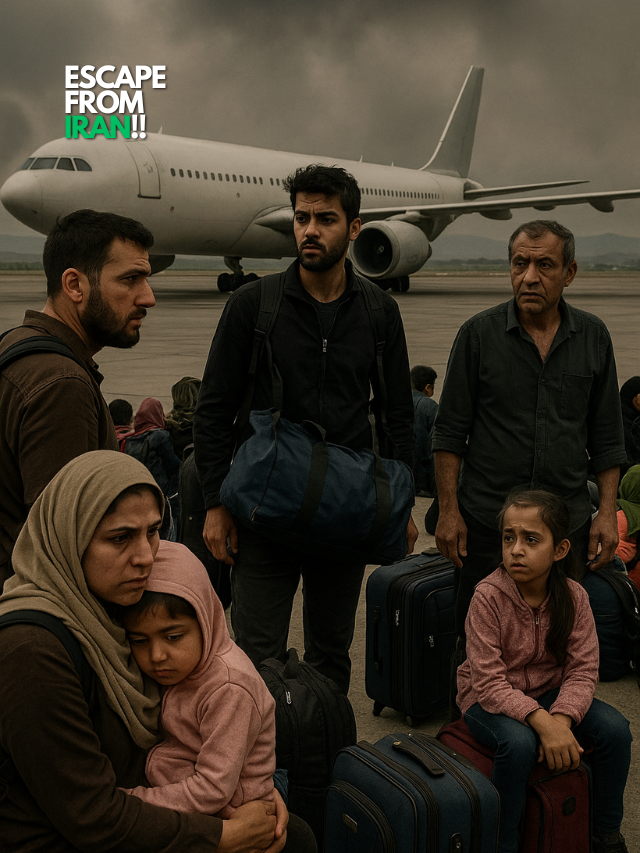Summary
- Over 600 people from 17 countries have fled Iran via Azerbaijan since Israel launched surprise airstrikes last Friday, triggering regional panic.
- Evacuees report fuel shortages, long queues at gas stations, and delayed border crossings, with one Kyrgyz man waiting eight hours to escape.
- The Kremlin thanked Azerbaijan for aiding Russian nationals, while India has evacuated 110 citizens through Armenia in a parallel operation.
The Great Escape: How Foreign Nationals Are Fleeing Iran Amid Escalating Air War
As the Iran-Israel air war enters its sixth day, more than 600 foreign nationals from 17 countries have crossed into Azerbaijan, seeking safety from an increasingly volatile situation. The exodus comes after Israel’s unannounced aerial bombardment campaign last Friday, which triggered retaliatory missile and drone strikes from Tehran.
The scenes described by evacuees are harrowing—fuel shortages, border bottlenecks, and a country slipping into wartime emergency mode. U.S. President Donald Trump’s Monday warning urging residents of Tehran to “evacuate immediately” has further heightened the urgency.
While military operations continue, civilian movements tell a parallel story: one of fear, chaos, and desperate border crossings.
Hundreds flee Iran to Azerbaijan amid rampant Israeli strikes pic.twitter.com/UzXjuIauvi
— Azerbaijani Community of California (@AzerbaijaniCA) June 17, 2025
“I Waited Eight Hours”: Border Gridlocks and Fuel Crisis Grip Iran
- A Kyrgyz evacuee described waiting eight hours at an Iranian border checkpoint amid rising panic.
- Fuel shortages and long queues at gas stations are now widespread, crippling basic transport and slowing down evacuations.
- Iranian highways are reported to be clogged with outbound traffic, especially from Tehran, Isfahan, and Shiraz.
For those trying to flee Iran, getting out has become a race against logistics. One Kyrgyz man, speaking to regional media, said his vehicle idled near the Azerbaijani border for more than eight hours, with limited access to fuel or food. “There was no fuel anywhere. Everyone was hoarding what they had. People were scared,” he said.
The internal collapse of infrastructure may not yet be total, but the civilian anxiety is real—especially in provinces like Kermanshah and Esfahan, which were directly hit by Israeli drone strikes during Operation Rising Lion.
Russia, India, and Azerbaijan Step In: A Web of Civilian Diplomacy
- India evacuated 110 nationals via Armenia, working with Armenian authorities as Tehran’s airspace remained unstable.
- Russia publicly thanked Azerbaijan for facilitating the exit of Russian nationals through Baku.
- Azerbaijan is reportedly managing a coordinated safe passage for multiple nationalities, using humanitarian corridors.
As diplomatic ties strain across the region, one unexpected channel of cooperation has emerged: evacuation diplomacy.
On Tuesday, the Kremlin thanked Baku for its “assistance in the peaceful and secure departure” of Russian citizens. Azerbaijan, traditionally cautious in its foreign policy balancing act, has now become a critical evacuation hub—not only for Russians but also for Europeans, Central Asians, and Middle Eastern nationals.
Simultaneously, Armenpress confirmed India’s successful evacuation of 110 citizens through Armenia—a route made viable only because of coordination with both Yerevan and local transport operators. The operation echoes India’s past rescue missions in Ukraine and Sudan, now becoming an established part of its foreign policy toolkit.
Tehran Under Siege: Panic, Power Cuts, and the Shadow of Escalation
- U.S. President Trump issued a blunt warning for civilians in Tehran to evacuate immediately, fueling fears of wider strikes.
- Drone and missile exchanges between Iran and Israel have crippled communication and caused power disruptions in parts of Tehran and Qom.
- International airports remain closed or on minimal operations, leaving land evacuation as the only option for many.
Trump’s announcement has accelerated fears of a full-scale bombardment on Tehran. Though no such strikes have occurred yet, the U.S. warning has triggered widespread panic, especially among expatriates, students, and visiting workers.
According to humanitarian observers, communications blackouts, internet throttling, and rolling power cuts are increasing across central and northern Iran. The aviation sector is effectively paralyzed, with flights either cancelled or rerouted, making land routes through Azerbaijan and Armenia the only viable exit corridors.
Iranian officials, meanwhile, have remained mostly silent on the civilian exodus, focusing state media coverage on military retaliation and “resistance narratives.”
The Civilian Exodus: A Telling Parallel to Military Escalation
While airstrikes dominate headlines, the exodus of over 600 foreign nationals into Azerbaijan reveals a quieter but equally urgent side of the war: its humanitarian toll. The loss of fuel, the breakdown of border logistics, and the fear of being caught in crossfire have turned Iran’s northern exits into lifelines.
Each fleeing car, each embassy-coordinated convoy, is a small act of survival amid a geopolitical inferno. The coming days may bring more evacuations—possibly even coordinated UN involvement—but for now, escape remains self-directed, fragmented, and fraught with risk.



